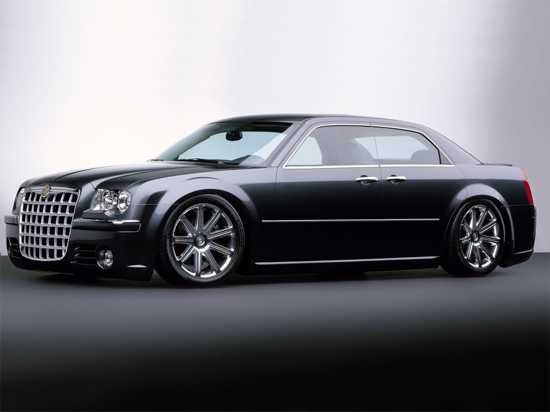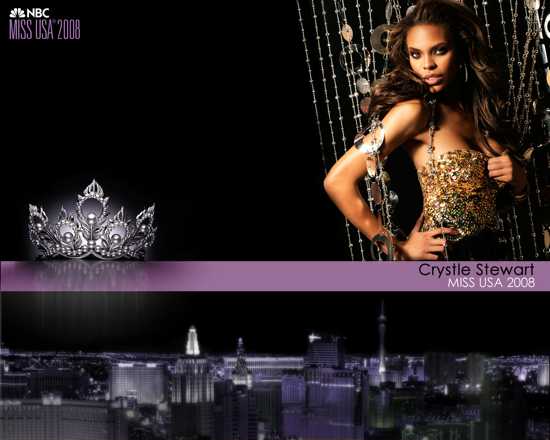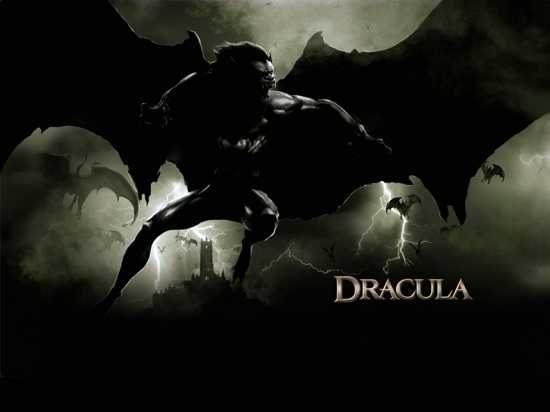 Weird Stuff
Weird Stuff  Weird Stuff
Weird Stuff  Miscellaneous
Miscellaneous Top 10 Things Crypto Was Supposed to Change & What Actually Did
 History
History 10 Huge Historical Events That Happened on Christmas Eve
 Music
Music 10 Surprising Origin Stories of Your Favorite Holiday Songs
 History
History 10 Less Than Jolly Events That Occurred on December 25
 Weird Stuff
Weird Stuff 10 Funny Ways That Researchers Overthink Christmas
 Politics
Politics 10 Political Scandals That Sent Crowds Into the Streets
 Weird Stuff
Weird Stuff Ten Bizarre Facts About The Doge Meme
 Our World
Our World 10 Ways Your Christmas Tree Is More Lit Than You Think
 Movies and TV
Movies and TV The 10 Coolest Stars to Set Sail on The Love Boat
 Weird Stuff
Weird Stuff 10 Fascinating Facts You Might Not Know About Snow
 Miscellaneous
Miscellaneous Top 10 Things Crypto Was Supposed to Change & What Actually Did
 History
History 10 Huge Historical Events That Happened on Christmas Eve
Who's Behind Listverse?

Jamie Frater
Head Editor
Jamie founded Listverse due to an insatiable desire to share fascinating, obscure, and bizarre facts. He has been a guest speaker on numerous national radio and television stations and is a five time published author.
More About Us Music
Music 10 Surprising Origin Stories of Your Favorite Holiday Songs
 History
History 10 Less Than Jolly Events That Occurred on December 25
 Weird Stuff
Weird Stuff 10 Funny Ways That Researchers Overthink Christmas
 Politics
Politics 10 Political Scandals That Sent Crowds Into the Streets
 Weird Stuff
Weird Stuff Ten Bizarre Facts About The Doge Meme
 Our World
Our World 10 Ways Your Christmas Tree Is More Lit Than You Think
 Movies and TV
Movies and TV The 10 Coolest Stars to Set Sail on The Love Boat
Top 10 Intense Three-Way Rivalries
This list is a response to the list entitled Top Ten Ultimate Rivalries published in The Ultimate Book of Top Ten Lists. The premise is simple: to count down ten great rivalries that include not just two, but exactly three diametrically opposed sides from categories ranging from history and sports to beauty and business. So with that, we might as well say it right now: Let’s get our three-way on.

This rivalry is merely the most recent in a long, complicated history of video game console rivalries that, itself, could probably merit a top ten list on its own, so it’s worth examining. In 1983, there was a big video game crash, as the popularity of arcades and home systems plummeted sharply. This was mainly caused by the overproduction of expensive, yet extremely low-quality, games, and a seemingly countless array of consoles to play them on, including the Wonder Wizard, the Magnavox Odyssey, the Mattel Intellivision and, most famous, the Atari 2600. Coming out of the crash in 1985 was the release of the Nintendo Entertainment System (NES), which achieved an unprecedented level of popularity with games such as The Legend of Zelda and Super Mario Bros, with which it was packaged.
Nintendo’s only serious rival came when the Sega Genesis was released later that decade (1988 in Japan and 1990 in North America) with its Sonic the Hedgehog franchise. The Sega Genesis was a 16-bit machine, giving it superior graphics and sound to the 8-bit NES and Atari. Nintendo countered in 1990 with the release of 16-bit Super-NES. Following this, the bit wars escalated from 16 to 32 with the development of the Sega Saturn and a new console from Sony, the PlayStation. Then, it went from 32 to 64 with the Nintendo 64, the Atari Jaguar and the Sega Dreamcast, the latter two marking the sad demise of each company respectively. In the early 2000s, Nintendo released the GameCube, which from a business standpoint paled in comparison to its predecessor (the N64) and was hammered by the PlayStation 2 and newcomer XBOX by Microsoft. In 2006, Sony and Microsoft released their much-anticipated follow-ups, the PlayStation 3 and the XBOX 360.
At this time many had counted Nintendo out of the game, as it were, but it proved to be Nintendo’s ability to innovate rather than imitate that saved them. The Wii, with a design intended for a wider user base and a two-part controller device (the “Remote and Nunchuk”), proved to be an instant hit. As of today it has sold more than 75 million units worldwide, eclipsing PlayStation 3’s 41 million and XBOX 360’s 44 million. To be fair, the PlayStation 2 is the all-time leader in units sold with over 140 million.

Across the globe it seems like almost every local professional soccer league has two great, legendary clubs that play against each other in a colossal rivalry. Real Madrid and Barcelona in Spain, Boca Juniors and River in Argentina, and so on. Italy is somewhat different in that there are three teams that have historically done battle at the top. For AC Milan a.k.a. “i Rossoneri” (the Red-and-Blacks), FC Internazionale Milano a.k.a. “i Nerazzurri” (the Black-and-Blues), and Juventus FC a.k.a. “i Bianconeri” (the White-and-blacks), this special rivalry nothing of short of epic.
To start, the three clubs are in very close proximity in Northern Italy, and more importantly, they dominate their league, Serie A, having won a combined total 62 national championships (more than 50% all-time). As of 2010, Juventus has won the most with 27, although Inter has recently won 5 in a row. The three have also been the tournament runner-up a combined total of 49 times and are the only clubs in Italy that display gold stars on their jerseys—signifying at least ten championships each.
They are further renowned for their strong international play. Together they have won 37 officially recognized international championships including 12 UEFA Champions League titles (ACM has the most with 7), as well as 7 UEFA Super Cup titles and 7 Intercontinental Cup titles. And if all this greatness isn’t enough to convince you that it would be intense when they take to the pitch against each other, then consider this: There is a Listverse.com list of the top ten soccer club rivalries and two of the selections are ACM/Inter and Inter/Juventus, so please reference that list for more detailed information.
Attention to any American readers who may not know and/or care what all this is about: Just wait, there is something for you coming up later.

On June 29, 1956, U.S. President Dwight Eisenhower signed into law the Federal Aid Highway Act, which authorized the construction of over 41,000 miles of interstate highways, the largest public works project in history. Now all America needed was cars to drive on it. Enter The Big Three: Ford, Chrysler and GM, all headquartered near Detroit, Michigan.
This rivalry is intense not so much in the competition for overall production or sales, which GM dominates, but more specifically in the evaluation of the automobiles themselves. It isn’t always easy to compare cars across company lines because of the industry tendency to blend categories and find untapped markets between existing ones. Nonetheless, there are abundant occasions in which the sizes and styles match up nicely. For example, the Ford Pinto, Dodge Colt and Chevrolet Vega; the Ford GT, Dodge Viper, and Chevrolet Corvette; and the Ford Mustang, Dodge Challenger, and Pontiac Firebird. There are numerous more instances of overlap, especially when you consider other vehicles such as trucks, minivans, and SUVs.
While the heyday of these rivals is long in the past and the three of them combined is barely able to compete against German and Japanese manufacturers, to many people the cars these companies sold for years represent the very spirit of what it means to be free and American.

The creed of the Miss Universe Pageant, despite its many detractors, is to spread a message of “peace, tolerance and mutual understanding” to the world. At the top of the crop are three nations (USA, Venezuela, and Puerto Rico) that come every year not just to play, but to win. The United States, where the competition originated, has 7 all-time wins, the leader; 15 all-time top-two finishes, the leader; and 54 all-time top-ten finishes, again the leader. It has been a staggering 13 years, however, since Brook Mahealani Lee from Hawai’i last delivered an American victory.
In Venezuela, where Miss Universe is the national pastime, they boast the following: Six all-time winners (including two of the last three and the only ever back-to-back winners); six more first-runner-ups; five more second-runner-ups; four third-runner-ups; and an unmatched 13 consecutive top-six finishes (1991-2003). Venezuela is also the only country that can claim multiple awards for Best-in-Swimsuit, of which it claims a total of 4, and in 1993 Venezuelan contestant Milka Chulina matched beauty with brains when she recorded the highest-ever score (9.843) in the interview portion.
Last but not least, the humble island territory of Puerto Rico, of approximately 4 million people, has won Miss Universe an impressive 5 times, which is more than double what the world’s two most populated nations, China and India, have combined. Puerto Rico has won the Miss Photogenic award an equally impressive 5 times, second only to the Philippines, and is one of only two countries (with Venezuela) that can claim at least one victory in each of the last four decades. In 2001, Puerto Rican contestant Denise Quiñones completed perhaps the most dominant performance ever, winning Miss Photogenic, Best-in-Swimsuit, and Best Hair, to go along with the—gloriously astronomical—title of Miss Universe.

For fans of American college football there is no lack whatsoever of intense rivalry. But when it comes to three-ways, one trio stands out from the crowd. The top three Florida schools have competed valiantly for bragging rights within their state and on a national scale. They are the University of Florida, a.k.a. “U.F.” or “The Gators” (as in alligators); Florida State University, a.k.a. “F.S.U.” or “The ‘Noles” (as in the Seminole tribe); and The University of Miami, a.k.a. “The U” or “The Canes” (as in Hurricanes).
Since 1983 they have combined for 10 AP National Championships and 6 Heisman Trophy winners. In that same period, Miami has set NCAA records for most consecutive home wins (58) and most consecutive years with a first-round NFL draft pick (14). Florida has won the two most recent AP National Championships (‘06 and ‘08) and the most recent Heisman Trophy (‘07). In 1999, Florida State became the first ever wire-to-wire #1 ranked team in the AP poll and they played in each of the first three BCS Championship games.
The Miami-FSU matchup many people feel is the best out of the three as they currently compete in the same conference and have played some of the closest games, many ending notoriously in missed [would-be] game-winning field goals. The Florida-Miami matchup is the most infrequent of the three, as Florida prefers not to schedule talented teams, although this fact seems to have the effect of making their rare meeting even more intense. (Even though they avoid Miami, UF is required by state legislature to schedule FSU annually). Perhaps the greatest single year in this rivalry came in 1996 when the #2 ranked Seminoles defeated the #1 ranked Gators 24-21 at home in Tallahassee. Florida had it’s revenge soon enough when the two were paired in a Sugar Bowl rematch on January 2, 1997. The Gators won 52-20 and ended the season #1 once more.

Among shallow white women an antagonism exists between these three hair-colors, and it is 100% based on stereotype. Blondes, to begin with, are typically thought of as less intelligent than brunettes, but also more attractive and—presumably because of this— they “have more fun”. While it is true that poll results show most men would rather date a blonde woman, a majority report preferring to marry a brunette one, following the belief that brunettes are smarter and more competent. Redheads, the least common group, are the X-factor in this dynamic. They are said to be more passionate, less patient, and far more sexually energetic. One juicy piece of trivia: Redhead are scientifically proven to be more tolerant to electrically-induced pain than are non-Redheads. They are, however, more vulnerable to pain that is thermally-induced. You’re welcome for that.

In classical Greek mythology, Zeus, Poseidon and Hades were three brothers who, after defeating the Titans, became the ruling gods of the universe. As it is told in the Iliad, Zeus became the god of the sky, Poseidon the god of the sea and Hades the god of the underworld, with the remaining lot—solid earth—presumed to be the domain available to any of the three, and thus the crux of the rivalry. Their often clever, but generally moody, escapades against each other and with mankind constitute some of the most well-known stories in the hundreds of generations between Homer and Homer Simpson.
Because Zeus is often called the “father of the gods” he is often erroneously thought of as the father of all gods, but this title simply refers to the large amount of godly offspring he sired in his many random sexual conquests; offspring such as Apollo, Athena, Dionysus, Helen of Troy, Hephaestus, Heracles, Hermes, Minos, Persephone, Perseus, among several others. Yet with that established, Poseidon was a playboy in his own right. It was his erotic tryst with Medusa in an Athenian temple that caused her to turn into the hideous beast whom Zeus’s son Perseus beheaded in the movie, Clash of the Titans. He also fathered various other figures such as Polyphemus the Cyclops, who fought Odysseus in the Odyssey, and Triton the Merman, who assisted Jason and his Argonauts in their quest for the Golden Fleece, after Zeus refused to. Hades had less luck than his brothers and is usually featured in tales involving kidnap and/or attempted rape (opposed to successfully executed rape which is sometimes the case with Zeus and Poseidon), most notably with Zeus’s daughter Persephone. The Roman equivalents to Zeus, Poseidon and Hades are Jupiter, Neptune and Pluto.

This three-way relationship achieves status as an all-time great for two reasons. First, for the rivalry between each of the monster franchises, and secondly for the rivalry that exists between the three monsters themselves. In 1931, Universal Pictures released two horror films. One was “Frankenstein,” based on Mary Shelley’s 1818 gothic horror novel, with Boris Karloff playing the Monster. The other was “Dracula” starring Béla Lugosi, based on the 1897 novel by Bram Stoker. Both films proved immensely popular and spawned two sequels each within five years. But it wasn’t until “The Wolf Man”, starring Lon Chaney Jr., was released in 1941 that the trio was complete and the three characters could begin crossing over.
In “Frankenstein Meets the Wolf Man” (‘43), the Monster and the Wolf Man fight each other in the first ever intra-trio battle (spoiler: they both die by drowning). Then in “House of Frankenstein” (‘44) and “House of Dracula” (‘45), the Wolf Man fights against each titular character correspondingly. Next came “Abbott and Costello Meet Frankenstein” (‘48) in which all three come together, with Dracula controlling the Monster in a fight against the Wolf Man. For most of these films, and a few others, Chaney, Karloff and Lugosi reprised their signature roles.
Later in the early seventies, two films, called “Dracula vs. Frankenstein” and “Dracula: Prisoner of Frankenstein”, featured all three characters, yet again. And later still, the three appeared in “The Monster Squad” (‘87), “Monster Mash” (‘95), another “Monster Mash,” (‘00), this one a cartoon starring Alvin and the Chipmunks, and “Van Helsing” (‘04). Needless to say, the three can’t get enough of each other, and this description is not even close to being exhaustive. One fun take was the sitcom The Munsters, in which the dad is Frankenstein’s Monster, the mom is Dracula’s daughter and the son is a young werewolf.

In the psychological model given by Sigmund Freud, the Id, the Ego and the Super-ego, or, in German, das Es (the “It”), das Ich (the “I”) and das Über-Ich (the upper “I”) are the three substructures that compose the whole of mental activity. The Id is the “dark, inaccessible part of our personality” that we inherit at birth and which acts according to physical pleasure and satisfaction. It is also described as “chaos” and “a cauldron full of seething excitation.” The Ego, on the other hand, is the part that acts according to reason, common sense, and other principles influenced by the external world. In this sense, the Ego is fundamentally opposed to the Id.
The Ego, however, also serves as the mediator between the demands of both the Id and the remaining third, the Super-ego, which is the part acting according to ideals, goals and the aim for perfection. The Super-ego therefore is also fundamentally opposed to the Id, and it is the part responsible for the feelings of guilt that follow pleasure. We can think of this rivalry as an ever-present struggle going on in each of our minds all day every day. It should be stated, though, that this is only one of three different schools of thought, which together form a three-way rivalry on their own.

The rivalry between the three great, monotheistic religions (Christianity, Judaism and Islam) earns the top spot because it is without a doubt, and by a huge margin, the bloodiest conflict on this list.
Historically, it’s may be difficult to pinpoint an exact time when it all got started. The Islamic religion, marking its beginning with the writing of the Quran in 610 AD, is surely the latecomer of the three. Long before this, however, the Christians and the Jews had been going at it pretty bad, beginning with Jesus Christ’s crucifixion in 33 AD by Roman executioners following a Jewish conviction (this was complicated). This enmity intensified incalculably with the Roman Emperor Constantine I’s conversion to Christianity in 312 AD, an event argued by some authors, such as James P. Cook, to have paved the way for Christian persecution against Jews for the remainder of European history.
But we could go even further back than that. In the year 701 BC, an enormous Assyrian army under the command of Sennacherib attempted to conquer the Israelite city of Jerusalem. Had this attempt succeeded, perhaps the very notion of monotheism, which at the time was unique to the Israelites, would have been lost forever. On the contrary, the Israelite victory further cemented their faith in a single God, so much so that it persevered even when they were conquered and enslaved by the Babylonians shortly after. Further back still, all three religions ultimately trace their legacy to the prophet Abraham, who lived in Ur around 2,000 BC, which is pushing the limits of what we would consider civilization itself.
So anyway, once the Arab Muslims sprung up and conquered Jerusalem in 638, the real commotion began. Going down the timeline, there is no shortage of barbarism between all three groups, including but not limited to the following: No less than ten Crusades to Jerusalem by European Christians; the persecution and purge of Jews, Muslims and even Christians, by Christian inquisitors in Spain; and of course, most tragically and notoriously, the mass extermination of Jews in German occupied lands by, and I use this application hesitantly, Christian Nazis in World War II. The Jewish holocaust of the 20th century, a fact openly denied by some prominent Muslims, no doubt was highly influenced by a previous and less-talked-about conflict, namely, the genocide against Armenian Christians at the hands of the Ottoman Turks (a German ally, notice) during the first world war. All this is in addition to singular acts of violence, such as the 1972 Munich Olympics massacre.
This past year, as one last example of how the fire continues to rage, a self-ordained Christian pastor in Florida zealously proclaimed 9/11 to be “International Burn-A-Koran Day” as a way of commemorating the WTC attacks, which were quoted by Osama Bin Laden as being necessary because of the American support of Israel. Those attacks killed over 3,000 Christian, Jewish and Muslim people.








